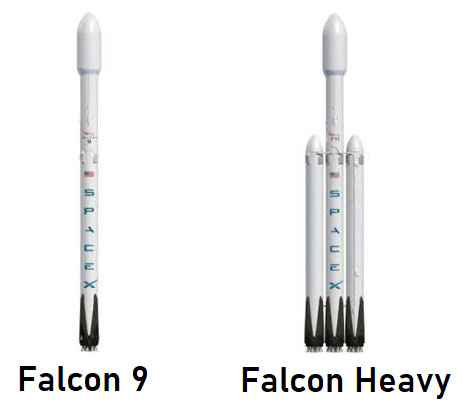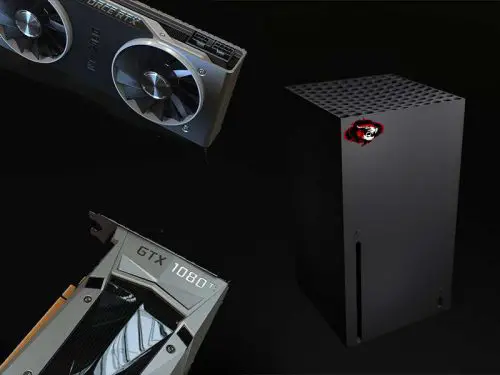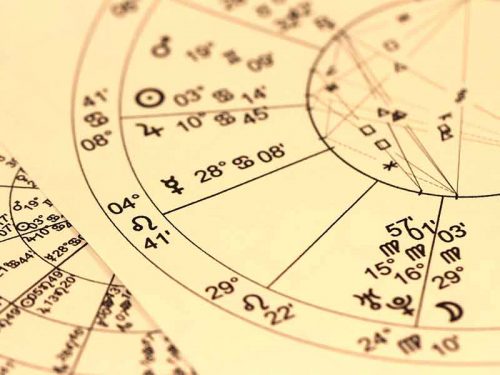Falcon 9 vs Falcon Heavy – What’s the difference?: Often when we look up in the sky we are graced with the natural beauty of stars, however, if you were living in southern California on December 22nd, 2017, you might have seen a more man-made spectacle, an ethereal trail cast across the sky ascending up into space.
All courtesy of space x Falcon 9 rocket which was launched 30 minutes after sunset, carrying 10 iridium next communication satellites.

Inspiring your journey, one story at a time. #LifeFalcon.
The mission itself was an astounding success.
Table of Content
What the difference between the Falcon 9 and the Falcon Heavy Rockets?

- Both the Falcon 9 and the Falcon Heavy rockets are 70 meters (230 feet) in height.
- Falcon 9 can lift up to 22,800 kilograms in weight (50,300 lbs) whereas the Falcon Heavy rocket can lift a payload of 64000 kilograms or 141,000 lbs.
- Falcon 9 has a mass of 505,806 kg while the Falcon Heavy weighs 1.421 million kg.
- According to SpaceX the launch of the Falcon 9 rocket costs $62 million and the launch of the Falcon Heavy rocket costs $90 million.
Falcon 9
![]()
Falcon 9 is a startling piece of numerous engineering innovations, where every single piece was made in house by SpaceX. Everything from the design to fabrication was done there. The main goal was to make rockets as cheap as possible.
Let’s see what’s under the hood of Falcon 9 rocket.
In the first stage, we have the 9 Merlin engines and the alloy tanks which have liquid oxygen in them and propellant (rocket-grade kerosene).
In the 2nd stage, we have the single Merlin vacuum engine which delivers the payload in the earth’s orbit. Combing the 2 stages is the interstage (the center black piece you see) which is required for the separation.
Merlin engines have the most efficient boosters, having thrust to its weight ratio of about 150 times more, meaning it can carry almost 150 times what it weighs. With 9 of these Merlin engines the Falcon 9 is able to take off.
Overall Falcon 9 has been a huge success and NASA has already contracted with SpaceX to use their rocket to deliver some cargo to the international space station by the end of this year.
Falcon Heavy

After successfully reusing the Falcon 9 rockets for 2 years the Falcon Heavy follows the same trend.
The side boosters and the central core all land on different locations, with side boosters descending on the land and the main core, since it goes too fast, lands on the autonomous ship, which is then able to communicate with the rocket and is able to catch it.
On February 6, 2018, SpaceX tested the Falcon Heavy flight. The rocket carried the Tesla Car (The roadster) as a dummy payload since it was just a launch test with a mannequin dressed in a spacesuit. (Which is itself actually a great marketing technique to develop Tesla’s brand image).
On the first Falcon Heavy launch test, only the side boosters were made reusable but on April 11th, 2019, during another SpaceX flight test all three boosters were able to come back to earth and land safely, making Falcon Heavy the completely reusable rocket.
As you can see from the video, at the point after the liftoff the rocket seems to go down, but as the side boosters are separated the central core throttles back up.
The Falcon heavy rockets will be used for some time for NASA’s cargo missions but according to Elon Musk, the rocket is designed to meet the human standard protocols given by NASA and it won’t be long since the Falcon Heavy rocket will be used for man missions to the moon or even to our beloved red planet, MARS.
Actual image of Mars
 See in high quality on NASA’s website.
See in high quality on NASA’s website.
The Falcon Heavy rockets are very reliable. The first stage of the rocket has 3 nine-engine cores which are the same ones used in the Falcon 9 rockets. Overall the 27 Merlin engines provide about 1.72 million kilograms of thrust force at the time of lift-off.
Falcon Heavy is the big brother of Falcon 9. Everything that Falcon 9 does, the Falcon Heavy does it better. It is equivalent to 3 Falcon 9 engine cores. It is designed with reliability in mind. The first stage consists of three nine-engine cores. They are the same cores used to power the Falcon 9. The 27 engines will provide 3.8 million pounds of thrust at liftoff (to put that into perspective, that’s equivalent to 18 Boeing 747’s thrust.
For this purpose, the Falcon Heavy was adapted from three Falcon 9 nine-engine cores, for an impressive five million pounds of thrust at liftoff, equal to 18 Boeing 747’s.
According to SpaceX
“Each of Falcon Heavy’s side cores, or boosters, is equivalent to the first stage of a Falcon 9 rocket with nine Merlin engines.



















